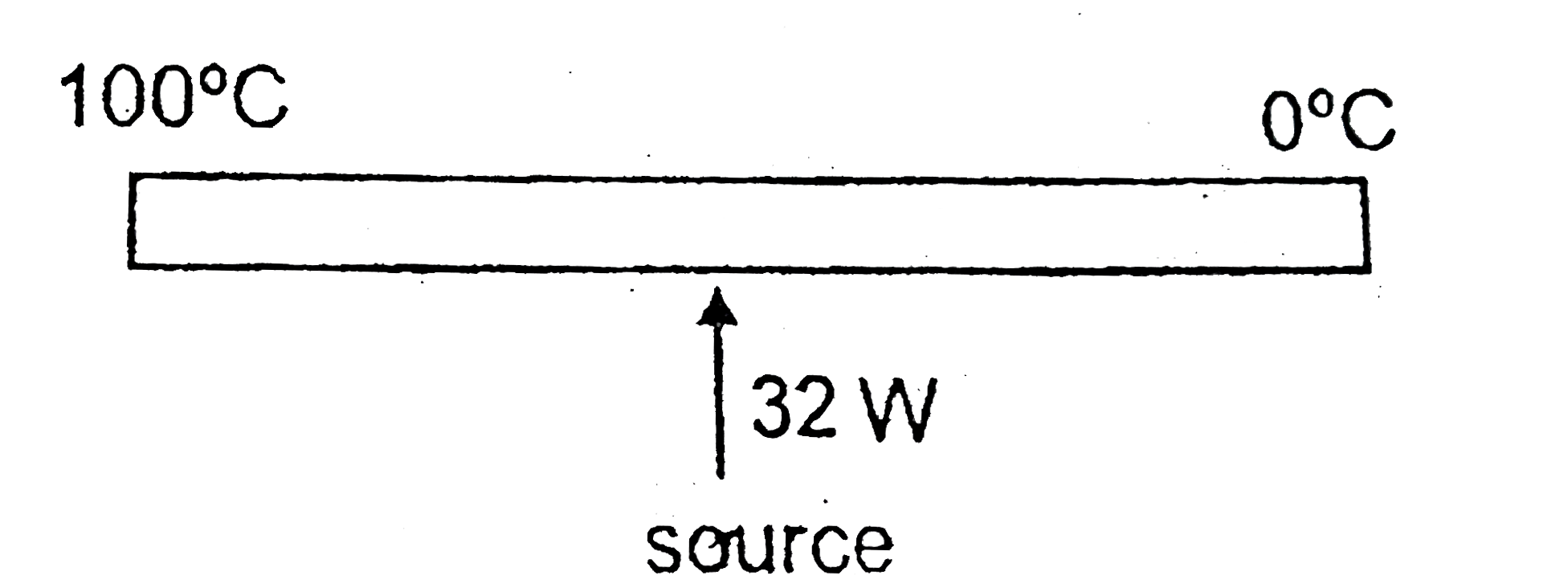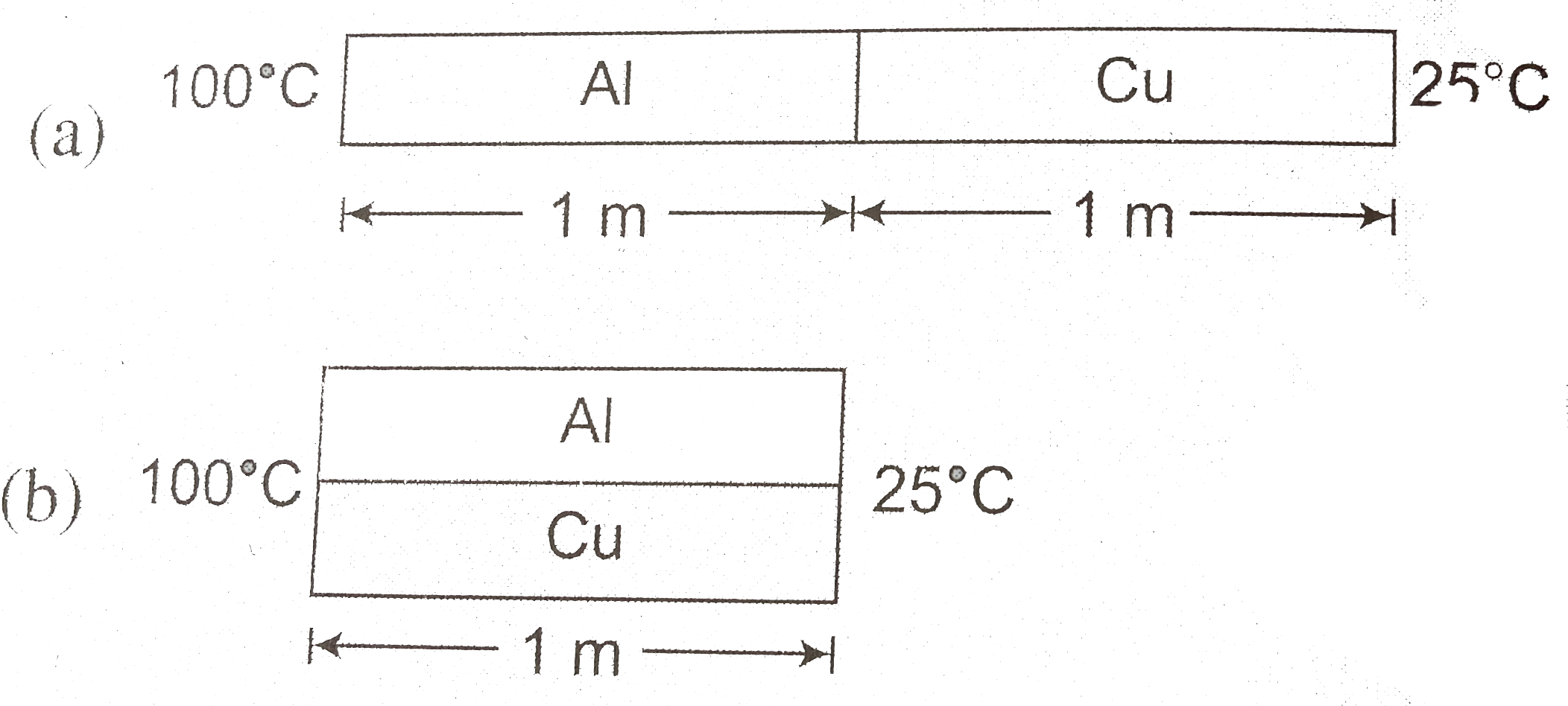A steel rod (Y=2.0×1011N/m2 and α=10−50.∘C−1) of length 1 m and area of cross-section 1 cm2 is heated from 0.∘C to 200∘C, without being allowed to extend or bend. What is the tension produced in the rod?
To solve the problem of finding the tension produced in a steel rod when it is heated without being allowed to extend or bend, we can follow these steps:
Step 1: Identify the Given Information
We have the following parameters:
- Young's modulus (Y) = 2.0×1011N/m2
- Coefficient of linear expansion (α) = 10−5°C−1
- Length of the rod (L) = 1 m
- Area of cross-section (A) = 1 cm² = 1×10−4m2
- Change in temperature (ΔT) = 200°C−0°C=200°C
Step 2: Use the Formula for Tension
The tension (T) produced in the rod due to thermal expansion when it is constrained is given by the formula:
T=Y⋅α⋅A⋅ΔT
Step 3: Substitute the Values into the Formula
Now, we can substitute the known values into the formula:
T=(2.0×1011N/m2)⋅(10−5°C−1)⋅(1×10−4m2)⋅(200°C)
Step 4: Calculate the Tension
Now, we perform the multiplication step-by-step:
1. Calculate Y⋅α:
2.0×1011×10−5=2.0×106
2. Multiply by the area:
2.0×106×10−4=2.0×102=200
3. Finally, multiply by the change in temperature:
200×200=40000
4. Now, express this in scientific notation:
40000=4.0×104
5. Therefore, the tension is:
T=4.0×104N
Final Answer
The tension produced in the rod is 4.0×104N.
---
We have the following parameters:
- Young's modulus (Y) = 2.0×1011N/m2
- Coefficient of linear expansion (α) = 10−5°C−1
- Length of the rod (L) = 1 m
- Area of cross-section (A) = 1 cm² = 1×10−4m2
- Change in temperature (ΔT) = 200°C−0°C=200°C
The tension (T) produced in the rod due to thermal expansion when it is constrained is given by the formula:
T=Y⋅α⋅A⋅ΔT
Now, we can substitute the known values into the formula:
T=(2.0×1011N/m2)⋅(10−5°C−1)⋅(1×10−4m2)⋅(200°C)
Now, we perform the multiplication step-by-step:
1. Calculate Y⋅α:
2.0×1011×10−5=2.0×106
2. Multiply by the area:
2.0×106×10−4=2.0×102=200
200×200=40000
40000=4.0×104
T=4.0×104N
The tension produced in the rod is 4.0×104N.
Topper's Solved these Questions
- MECHANICAL PROPERTIES OF SOLIDSBOOK - NCERT EXEMPLAR ENGLISHCHAPTER - MECHANICAL PROPERTIES OF SOLIDSEXERCISE - LONG SHORT ANSWER TYPE QUESTION
16 Videos
- MECHANICAL PROPERTIES OF FLUIDSBOOK - NCERT EXEMPLAR ENGLISHCHAPTER - MECHANICAL PROPERTIES OF FLUIDSEXERCISE - Long Answer Type Questions
3 Videos
- MOTION IN A PLANEBOOK - NCERT EXEMPLAR ENGLISHCHAPTER - MOTION IN A PLANEEXERCISE - Multiple Choice Questions
37 Videos
Similar Questions
The temperature of a wire of length 1 metre and area of cross-section 1cm2 is increased from 0∘C to 100∘C. If the rod is not allowed to increased in length, the force required will be (α=10−5/.∘CandY=1011N/m2)
View SolutionIf the temperature of a wire of length 2m and area of cross-section 1cm2 is increased from 0∘C to 80∘C and is not allowed to increase in length, then force required for it is (Y=1010N/m2,∝=10−6/∘C)
View SolutionA steel rod of length 1 m rests on a smooth horizontal base. If it is heated from 0∘C to 100∘C, what is the longitudinal strain developed?
View SolutionA steel rod of length 1 m rests on a smooth horizontal base. If it is heats from 0∘C to 100∘C, what is the longitudional strain developed?
View SolutionThe ends of copper rod of length 1m and area of cross section 1cm2 are maintained at 0∘C and 100∘C. At the centre of rod, there is a source of heat of 32W. The thermal conductivity of copper is 400W/mK

View SolutionA metel rod of the length 10cm and a rectangular cross-section of 1 cm xx 1/2 cm is connected to a battery across opposite faces. The resistance will be
View SolutionA metel rod of the length 10cm and a rectangular cross-section of 1 cm xx 1/2 cm is connected to a battery across opposite faces. The resistance will be
View SolutionAn aluminium rod and copper rod of equal length 1m and cross-sectional area 1cm2 are welded as shown. KA1=200W/m∘C,KCu=400W/m∘C. Find heat current


View SolutionThe area of cross section of a steel wire (Y=2.0×1011N/m2) is 0.1cm2. The force required to double is length will be
View SolutionA rod of length 2m rests on smooth horizontal floor. If the rod is heated from 0∘C to 20∘C. Find the longitudinal strain developed ? (α=5×10−5/.∘C)
View Solution
